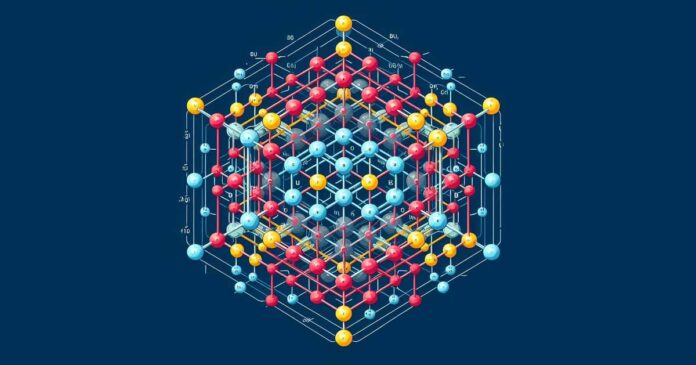Quantum physics is the study of the nature and behavior of matter and energy at the smallest scales.
It reveals some of the most fascinating and mysterious phenomena in the universe, such as superconductivity, quantum entanglement, and quantum tunneling.
One of these phenomena is the excitonic insulator, a new quantum phase of matter that has been predicted by theorists for decades, but never observed in a natural solid.
An excitonic insulator is a material that undergoes a metal-insulator transition due to the condensation of excitons, which are bound pairs of electrons and holes (missing electrons) with opposite charges.
These excitons have a non-zero momentum, which means they can move through the material and form a periodic pattern of charge density waves (CDW).
This pattern reduces the electrical conductivity of the material, making it an insulator.
The Experiment
A team of researchers from Shanghai Jiao Tong University and other institutes has recently reported the first evidence of an excitonic insulator in a natural solid with a purely electronic origin.
The material they studied is hafnium telluride (HfTe2), a semi-metallic compound that forms atomically thin layers.
The researchers used a technique called molecular beam epitaxy to grow high-quality HfTe2 thin films on sapphire substrates.
They then measured the electrical and optical properties of the films using various methods, such as transport, spectroscopy, and microscopy.
The researchers found that the HfTe2 thin films exhibited a metal-insulator transition at low temperatures, accompanied by the formation of CDW.
They also observed a strong coupling between the electrons and holes in the material, indicating the presence of excitons.
To confirm the electronic origin of the transition, the researchers performed phonon calculations, which showed that the HfTe2 structure was stable and did not undergo any lattice distortions.
They also found that the transition temperature was sensitive to the carrier concentration, which is a characteristic feature of exciton condensation.
The Implications
The discovery of an excitonic insulator in HfTe2 is a significant breakthrough for the field of quantum physics, as it provides the first experimental realization of a long-sought-after quantum phase.
It also opens up new possibilities for exploring the rich physics of excitons and their interactions with other quantum particles, such as phonons, plasmons, and photons.
Moreover, it could lead to the development of novel devices based on the manipulation of excitons and CDW, such as switches, sensors, and transistors, for applications in quantum computing, information processing, and communication.
Conclusion
In summary, the researchers have demonstrated the existence of an excitonic insulator in atomically thin HfTe2, a natural solid with a purely electronic transition origin.
This is the first experimental observation of this elusive quantum phase, which has been predicted by theory for decades.
The researchers have validated their results using various calculations and analyses, and have revealed the key role of excitons and CDW in the metal-insulator transition.
Their findings pave the way for further studies on the physics and applications of excitons and CDW in two-dimensional materials.
FAQs
An exciton is a bound pair of an electron and a hole (missing electron) with opposite charges. Excitons can form in semiconductors and insulators when electrons are excited by light or electric fields and leave behind holes. Excitons can have different types and properties depending on the material and the conditions.
A charge density wave (CDW) is a periodic modulation of the charge density in a material, usually caused by the interaction between electrons and the crystal lattice. A CDW can affect the electrical, optical, and magnetic properties of the material, and can sometimes coexist or compete with other quantum phases, such as superconductivity.
A metal-insulator transition is a phenomenon in which a material changes from a metallic state, where it conducts electricity well, to an insulating state, where it does not. This transition can be triggered by various factors, such as temperature, pressure, magnetic field, or doping. A metal-insulator transition can reveal important information about the electronic structure and the interactions of the material.
Hafnium telluride (HfTe2) is a compound of hafnium and tellurium, belonging to the family of transition metal tellurides. It has a layered structure, where each layer consists of a hexagonal lattice of hafnium atoms sandwiched between two triangular lattices of tellurium atoms. HfTe2 is a semi-metal, meaning it has both metallic and non-metallic properties, and can form atomically thin films.
HfTe2 is a good candidate for an excitonic insulator because it has a low carrier concentration and a balanced number of electrons and holes near the Fermi surface, which are favorable conditions for exciton formation and condensation. Moreover, HfTe2 has a stable structure and does not exhibit any lattice distortions, which exclude other possible mechanisms for the metal-insulator transition.
More information: Qiang Gao et al, Observation of possible excitonic charge density waves and metal–insulator transitions in atomically thin semimetals, Nature Physics (2024). DOI: 10.1038/s41567-023-02349-0


[…] A New Quantum Phase Discovered in Atomically Thin Hafnium Telluride […]